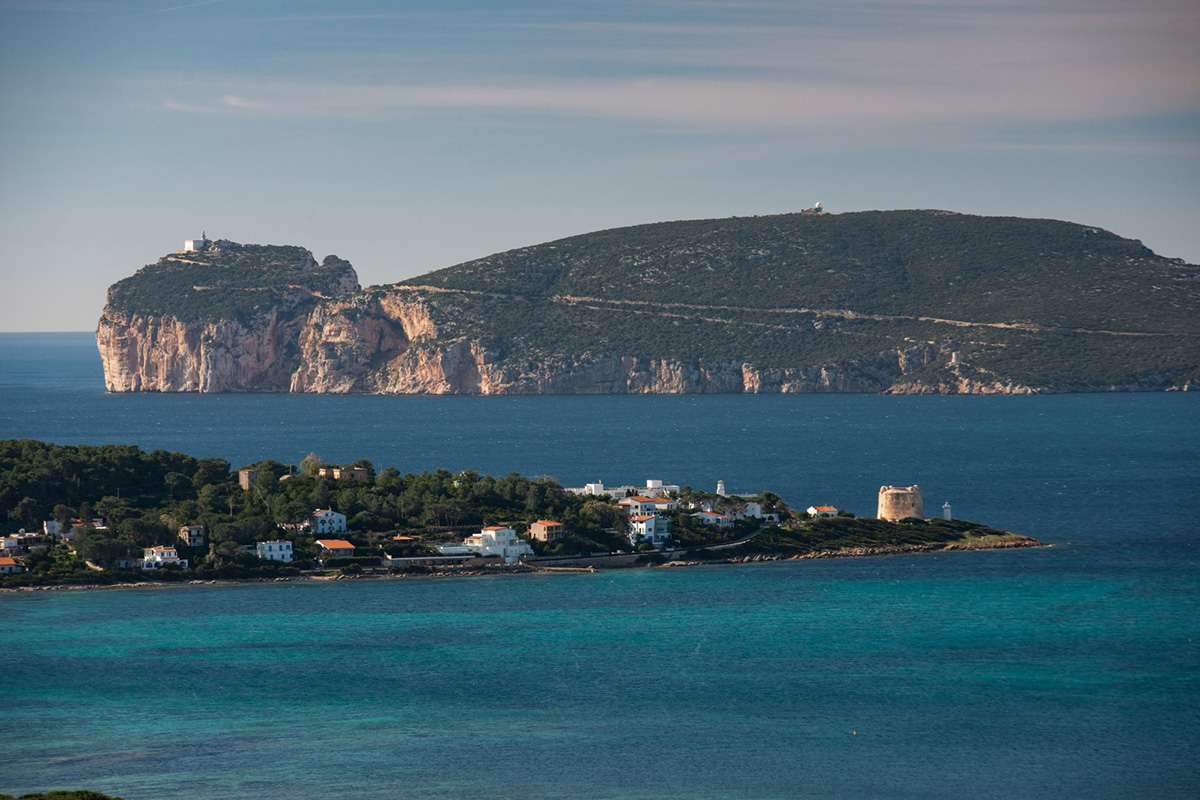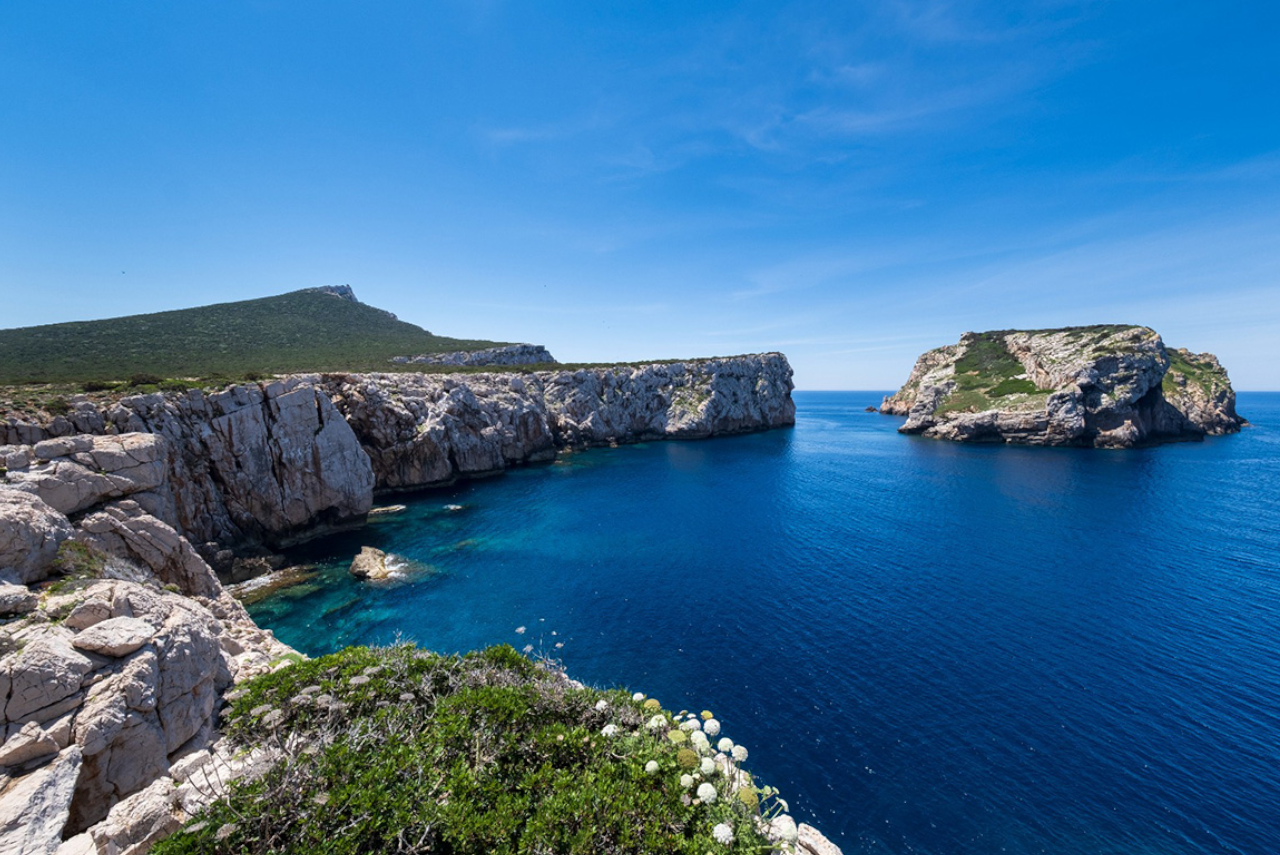ALGHERO SAILING SCHOOL | TUTORIAL | POINTS OF INTEREST

Capo caccia
Capo Caccia or, in Alghero, Cap de la Caça is an imposing limestone promontory that dominates the bay of Alghero and encloses the bay of Porto Conte together with Punta Giglio.
It owes its name to the hunting trips that the Savoy king carried out in these areas. Along the promontory there are many caves both emerged and submerged, some very famous such as the caves of Neptune, the cave of Nereo or the Green cave where rock paintings and ceramic remains were found. The deep waters around the promontory give the water an intense blue colour. Very important from a wildlife point of view, along the cliff you can observe the peregrine falcon, the herring gull, the Bonelli's eagle and other rare birds.
On the top of Capo Caccia stands a lighthouse visible from over 30 km





























